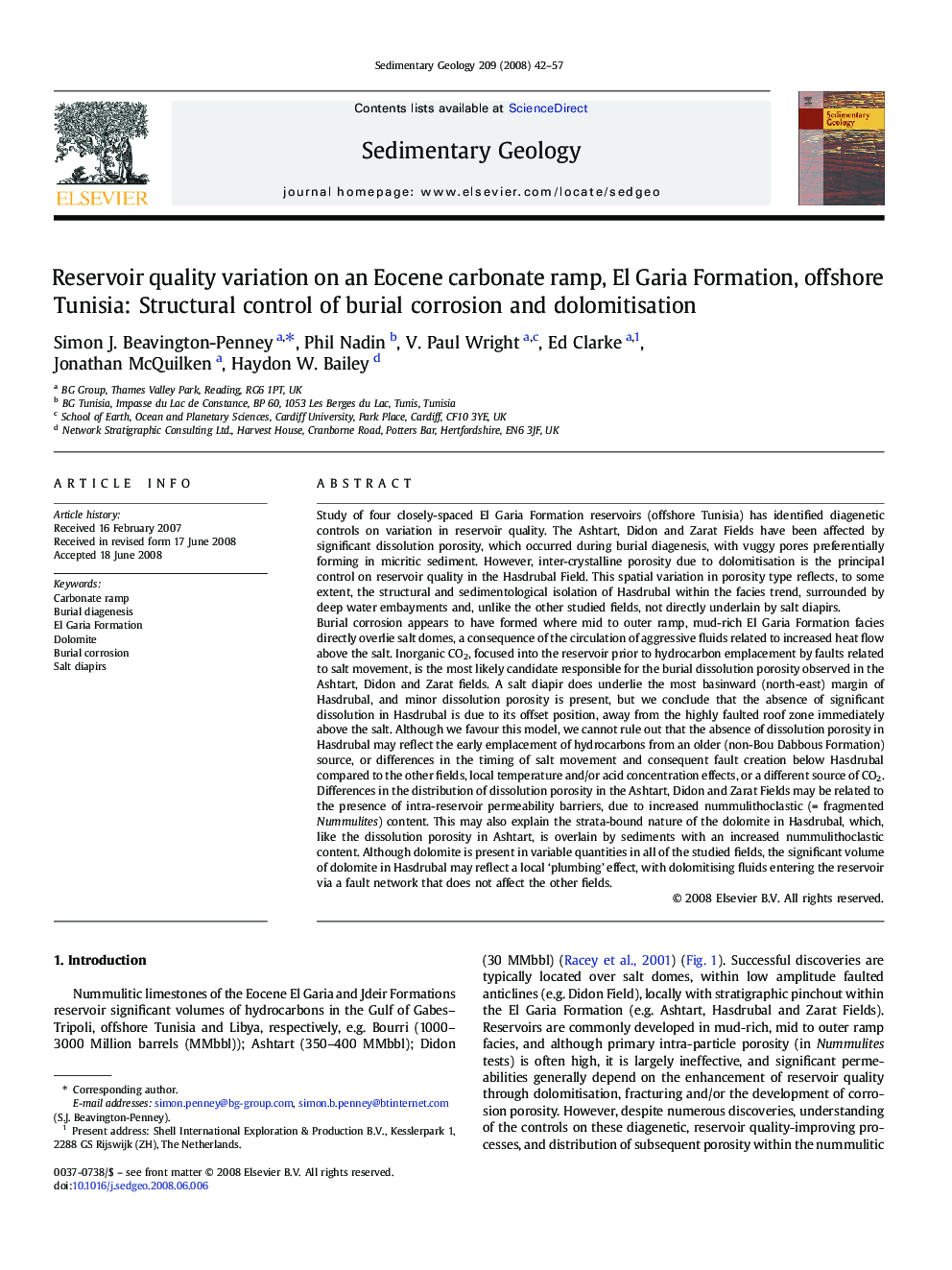| Article ID | Journal | Published Year | Pages | File Type |
|---|---|---|---|---|
| 4690645 | Sedimentary Geology | 2008 | 16 Pages |
Abstract
Burial corrosion appears to have formed where mid to outer ramp, mud-rich El Garia Formation facies directly overlie salt domes, a consequence of the circulation of aggressive fluids related to increased heat flow above the salt. Inorganic CO2, focused into the reservoir prior to hydrocarbon emplacement by faults related to salt movement, is the most likely candidate responsible for the burial dissolution porosity observed in the Ashtart, Didon and Zarat fields. A salt diapir does underlie the most basinward (north-east) margin of Hasdrubal, and minor dissolution porosity is present, but we conclude that the absence of significant dissolution in Hasdrubal is due to its offset position, away from the highly faulted roof zone immediately above the salt. Although we favour this model, we cannot rule out that the absence of dissolution porosity in Hasdrubal may reflect the early emplacement of hydrocarbons from an older (non-Bou Dabbous Formation) source, or differences in the timing of salt movement and consequent fault creation below Hasdrubal compared to the other fields, local temperature and/or acid concentration effects, or a different source of CO2. Differences in the distribution of dissolution porosity in the Ashtart, Didon and Zarat Fields may be related to the presence of intra-reservoir permeability barriers, due to increased nummulithoclastic (= fragmented Nummulites) content. This may also explain the strata-bound nature of the dolomite in Hasdrubal, which, like the dissolution porosity in Ashtart, is overlain by sediments with an increased nummulithoclastic content. Although dolomite is present in variable quantities in all of the studied fields, the significant volume of dolomite in Hasdrubal may reflect a local 'plumbing' effect, with dolomitising fluids entering the reservoir via a fault network that does not affect the other fields.
Related Topics
Physical Sciences and Engineering
Earth and Planetary Sciences
Earth-Surface Processes
Authors
Simon J. Beavington-Penney, Phil Nadin, V. Paul Wright, Ed Clarke, Jonathan McQuilken, Haydon W. Bailey,
